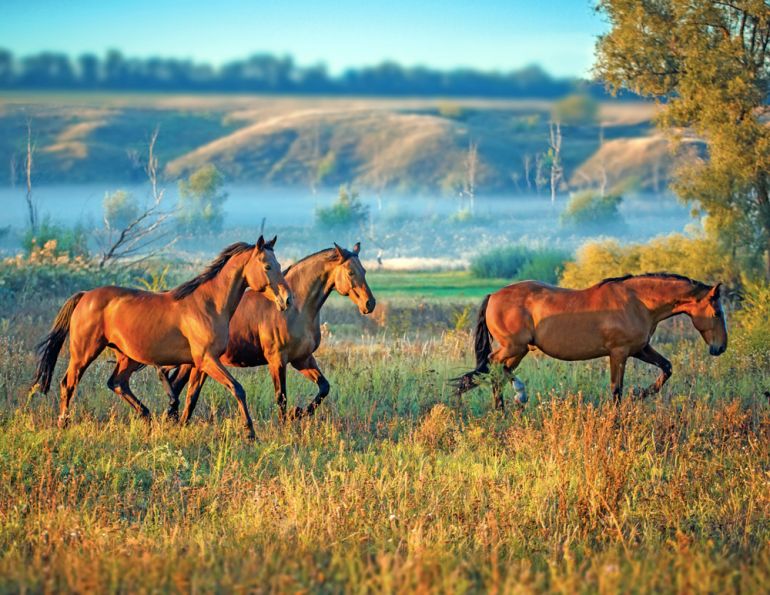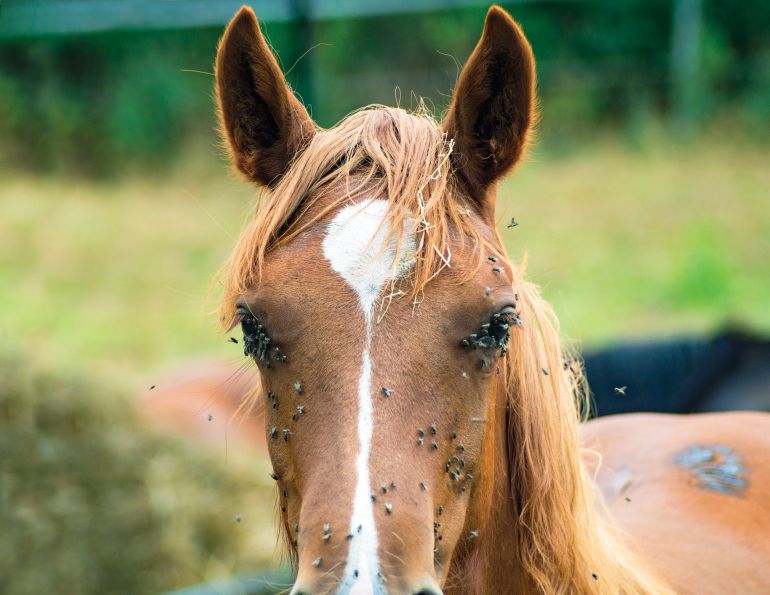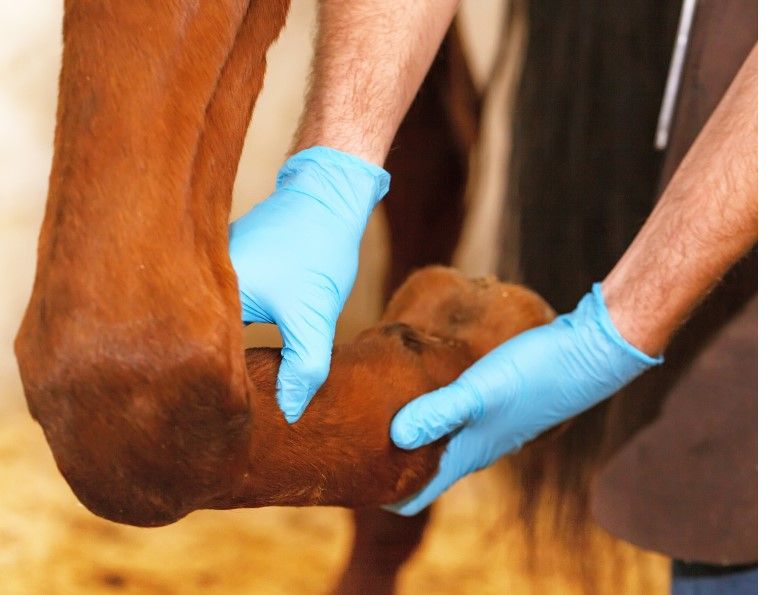By Jess Hallas-Kilcoyne
No owner wants to see their horse suffer. An appropriate equine vaccination program is one way to help ensure your horse's longevity and quality of life. When you vaccinate your horse against any number of diseases, you are protecting him from experiencing the devastating symptoms caused by any of the following:
Anthrax: Caused by the vegetative form of Bacillus anthracis, a bacterium present in the soil in certain geographic areas, Anthrax can present with a wide variety of symptoms including fever, colic, and swelling in the throat region. Infection usually, and often swiftly, proves fatal.
Botulism: The bacterium Clostridium botulinum produces toxins which, when they are introduced into the horse’s body via wounds or ingestion of contaminated feed, block transmission of nerve impulses. Clinical signs of botulism include muscle weakness which may progress to paralysis, inability to swallow, and death – either from respiratory failure or from complications arising from a prolonged period of recumbency.
Eastern/Western equine encephalomyelitis: Caused by certain alphaviruses, eastern and western equine encephalomyelitis (EEE/WEE) are transmitted by mosquitos and result in inflammation of the brain and spinal cord. Symptoms for both include fever, lethargy, erratic behaviour, impaired vision, and paralysis. WEE is fatal in approximately 50 percent of cases, while EEE has a mortality rate of about 90 percent.
Equine herpesvirus: Also known as equine viral rhinopneumonitis, equine herpesvirus (EHV) is a highly contagious disease caused by two forms of the same virus, equine herpesvirus-1 and -4, that are transmitted through coughing or contact with body fluids, including nasal secretions. Both EHV-1 and EHV-4 can cause respiratory infection, fever, lethargy, anorexia, cough, and nasal discharge. EHV-1 can also lead to epidemic abortion in mares, birth of weak foals, or a paralytic neurologic disease known as equine herpesvirus myeloencephalopathy (EHM).
Equine influenza: One of the most common respiratory diseases in horses, equine influenza is caused two distinct subtypes of influenza A viruses, of which the second (A/equine 2) is the only one to have been isolated in over two decades. Influenza is characterized by acute onset of symptoms, which include fever, nasal discharge, coughing, and general weakness. While it is rarely fatal, influenza is highly contagious.
Equine viral arteritis: Equine viral arteritis (EVA) is a contagious disease caused by equine arteritis virus. In otherwise healthy adult horses, EVA presents with fever, lethargy, stiffness, nasal discharge, and conjunctivitis, and is rarely fatal, but in broodmares, EVA can trigger abortion. Breeding stallions can be carriers of the disease, passing it along to mares without exhibiting any clinical signs themselves.
Potomac horse fever: Potomac horse fever is caused by the bacterium Neorickettsia risticii, and can be transmitted to horses through the accidental ingestion of infected insects. The disease is seasonal, with the high incidence of cases occurring during the hot summer months when insect populations reach their annual peak, and is characterized by fever, diarrhea, laminitis, and mild colic, as well as abortion in pregnant mares.
Rabies: While rare in horses, rabies is always fatal and can be transmitted to humans, posing a significant public health threat. The disease is transmitted through the bite of an infected animal – usually a skunk, raccoon, bat, or fox – and slowly migrates to the brain. The incubation period varies from two to ten weeks, but eventual clinical signs include fever, erratic or aggressive behaviour, excessive salivation, lack of coordination, and convulsions or paralysis.
Rotavirus: This infectious disease is a primary cause of diarrhea in foals younger than two months old. While mortality is less than one percent, rotavirus is extremely contagious, and is transmitted through contaminated feces. In addition to diarrhea, rotavirus can also cause depression and lead to difficulty standing or nursing.
Strangles: Strangles is caused by the bacterium Streptococcus equi subspecies equi. Highly contagious, strangles can be spread through direct or indirect contact, and horses can become carriers of the disease without exhibiting symptoms. Clinical signs include fever, nasal discharge, and swollen lymph nodes, usually of the throat, which can cause abscesses to form. In some cases, these abscesses may become so large that they compromise breathing, and may also rupture and drain pus.
Tetanus: Sometimes called “lockjaw,” tetanus is an often fatal disease caused by a powerful neurotoxin secreted from Clostridium tetani, an anaerobic bacterium that is ubiquitous in soil, as well as being present in the intestinal tract and feces of horses and other animals. Horses are particularly susceptible to this disease, and contamination occurs through wounds, particularly puncture wounds, lacerations, surgical incisions, and, in foals, the umbilical stump. Clinical signs of tetanus include sensitivity to light, sound, and touch, and muscle stiffness and spasm progressing to rigidity or paralysis. Tetanus is fatal in more than 80 percent of cases.
West Nile virus: While it originates from avian hosts, West Nile virus is transmitted to horses by mosquitos and can cause swelling of the brain and spinal cord, resulting in weakness, loss of coordination, changes in behaviour, and paralysis. Introduced to North America in 1999, the disease is now present in most parts of Canada. West Nile virus is fatal in approximately 33 percent of horses exhibiting clinical signs, and 40 percent of horses that survive acute illness caused by West Nile virus experience residual effects such as abnormal gaits and behaviour, sometimes on a permanent basis.
Main Photo: Pam MacKenzie Photography - An appropriate vaccination program can help protect your horse against serious, potential fatal, diseases.




























